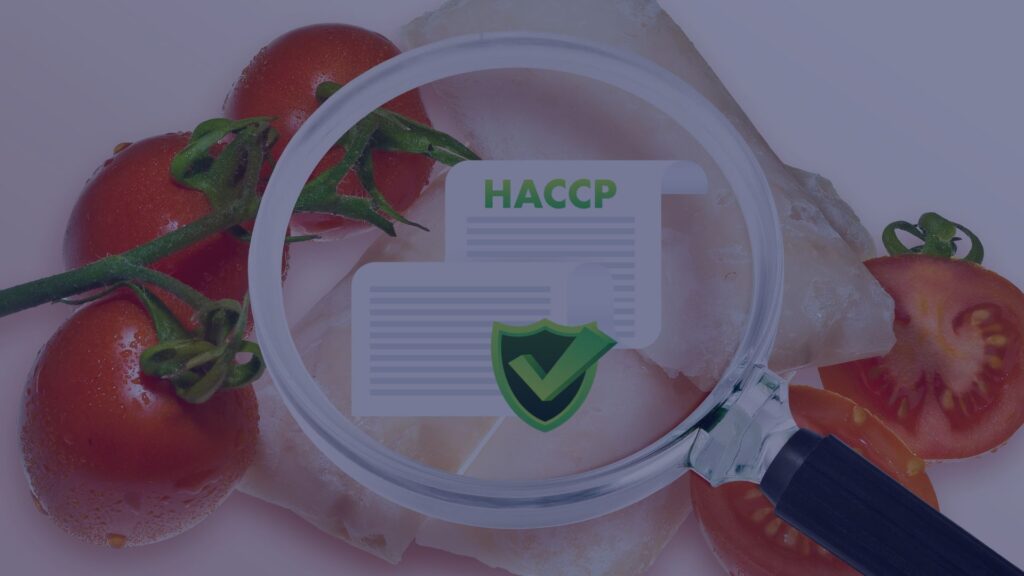What is Digital HACCP Software and Why is it Important for Food Safety Management?
Digital HACCP software represents a revolutionary shift in food safety management, transforming traditional paper-based systems into streamlined digital solutions. This innovative technology automates and digitises the critical task of maintaining food safety standards across production processes.
At its core, Digital HACCP software serves as a comprehensive platform that:
- Monitors critical control points in real-time
- Records and stores compliance data securely
- Generates automated alerts for safety deviations
- Provides instant access to food safety documentation
The importance of food safety in production cannot be understated. A single food safety incident can lead to:
- Severe health consequences for consumers
- Significant financial losses
- Permanent damage to brand reputation
- Legal implications and regulatory penalties
Modern tools for safer food production have evolved to meet these challenges head-on. Digital HACCP software integrates essential features such as:
- Temperature monitoring sensors for precise environmental control
- Automated record-keeping systems accessible via internet-connected devices
- Real-time compliance tracking to maintain food safety standards
- Cloud-based data storage for secure documentation
These digital HACCP software solutions ensure consistent food safety practices while reducing human error and streamlining compliance processes. The software’s ability to provide instant access to critical data helps businesses maintain the highest standards of food safety management across their operations.

How Does Digital HACCP Software Enhance Hazard Analysis and Critical Control Points (HACCP) Planning?
HACCP is a systematic method for managing food safety. It involves identifying potential hazards and putting control measures in place at specific stages of the production process. This proactive system ensures food safety by:
- Identifying biological hazards
- Preventing chemical contamination
- Controlling physical hazards
- Monitoring critical control points
Read more at: How Remote Temperature Monitoring Helps Australian Businesses Stay Ahead
Challenges with Traditional HACCP Implementation
The traditional way of implementing HACCP relies on paper-based documentation, manual temperature checks, and physical record-keeping. However, these methods come with significant challenges:
- Data entry takes a lot of time
- Human error is a possibility
- Records may not be easily accessible
- Response to safety breaches may be delayed
- Storage space is needed for records
The Transformation with Digital HACCP Software
Digital HACCP software changes these processes for the better:
1. Real-time Monitoring
With digital HACCP software, monitoring becomes more efficient and effective:
- Temperature sensors that operate automatically
- Immediate notifications for any safety violations
- Ability to monitor remotely
2. Data Management
Managing data is made easier with digital solutions:
- Storage in the cloud
- Record-keeping that happens automatically
- Quick access to past data
3. Risk Assessment
Risk assessment becomes more streamlined with built-in tools:
- Hazard analysis tools that are integrated into the software
- Risk calculations that happen automatically
- Assessment procedures that are standardised
Benefits of Digital HACCP Software
Digital solutions empower food businesses to maintain consistent safety standards while reducing manual workload. The software’s ability to track multiple control points simultaneously ensures no critical safety checks are missed, creating a robust food safety management system that adapts to modern production demands. Read more about management on https://online.uc.edu/blog/what-is-healthcare-management/

What Are the Key Features That Make Digital HACCP Software Effective?
Digital HACCP software stands out through its powerful features designed to streamline food safety management. These essential components work together to create a robust safety system:
1. Comprehensive HACCP Plan Creation
- Built-in templates for quick plan development
- Risk assessment tools for hazard identification
- Customisable workflows tailored to specific operations
- Step-by-step guidance for critical control points
2. Real-Time Monitoring and Alerts
- Automated temperature monitoring systems
- Instant notifications for safety violations
- Mobile-friendly data collection
- Digital documentation of corrective actions
3. Cloud-Based Integration
- Centralised data storage and accessibility
- Automated sync across multiple locations
- Real-time updates for all team members
- Secure backup of critical information
4. Prerequisite Programme (PRP) Integration
- Digital checklists for daily operations
- Equipment maintenance scheduling
- Staff training records management
- Supplier verification tracking
The software’s ability to create detailed audit trails proves invaluable during inspections. Users can generate reports with a few clicks, demonstrating compliance with food safety regulations. The system’s automated alerts help prevent food safety incidents before they occur, while cloud-based access ensures teams can respond to issues from anywhere.
These digital tools transform traditional paper-based systems into efficient, accurate, and responsive food safety management programmes. The integration of these features creates a comprehensive solution that adapts to various food service operations. Click here to find more about efficient.
What Benefits Can Businesses Expect from Using Digital HACCP Software?
Digital HACCP software transforms traditional food safety management into a streamlined, efficient process. The automation capabilities eliminate manual paperwork, reducing human error and saving valuable time for food safety teams.
Key Business Benefits:
- Time Savings: Automated documentation cuts administrative tasks by up to 75%
- Real-time Monitoring: Instant access to critical safety data across multiple locations
- Cost Reduction: Decreased food waste through precise temperature monitoring
- Enhanced Compliance: Automated record-keeping meets regulatory requirements
- Data-Driven Decisions: Analytics tools provide insights for process improvement
The software’s hazard analysis capabilities enable businesses to identify potential risks quickly. Built-in algorithms analyse historical data to predict potential safety issues before they occur, creating a proactive approach to food safety management.
Digital HACCP solutions simplify regulatory compliance through:
- Automated documentation of safety procedures
- Digital audit trails
- Instant access to required records
- Built-in compliance checklists
- Regular updates to meet changing regulations
These tools create a centralised system where teams can access, update, and share safety information in real-time. The standardised processes ensure consistent safety practices across multiple locations, reducing the risk of foodborne illness outbreaks and protecting brand reputation.
Which Industries Can Benefit the Most from Implementing Digital HACCP Software Solutions?
Digital HACCP software solutions deliver specific advantages across different sectors, with the hospitality and healthcare industries standing out as primary beneficiaries.
Hospitality Industry Applications:
- Hotels and restaurants gain real-time temperature monitoring for food storage
- Catering services maintain consistent food safety across multiple locations
- Food delivery services track temperature throughout the delivery chain
- Quick-service restaurants standardise food handling procedures
The hospitality sector’s fast-paced environment demands reliable systems to maintain food safety standards while serving large numbers of customers. Digital HACCP software enables staff to perform checks quickly and accurately during peak service hours.
Healthcare Facility Benefits:
- Hospitals maintain strict compliance with dietary requirements
- Aged care facilities track individual resident meal preparations
- Child care centres monitor allergen management
- Healthcare kitchens document sanitisation procedures
Healthcare environments require meticulous attention to food safety due to their vulnerable populations. Digital solutions help track special dietary needs, maintain precise temperature controls, and ensure proper food handling protocols are followed consistently.
These industries handle high-risk situations where food safety directly impacts public health. Digital HACCP software provides the necessary tools to maintain safety standards while managing complex operations across multiple departments or locations.
How Do Businesses Differentiate Between Various Digital HACCP Software Providers?
Selecting the right digital HACCP software provider requires careful evaluation of distinct features and capabilities. Here’s what sets leading providers apart:
Customisation Capabilities
- Tailor-made checklists aligned with specific business processes
- Adaptable templates for different food safety scenarios
- Flexible reporting tools that match your compliance requirements
Integration Options
- Compatibility with existing business systems
- Hardware integration for temperature monitoring
- Mobile accessibility across different devices
Service Approach
- Discovery calls to understand unique business needs
- Interactive demo sessions showcasing relevant features
- Dedicated support teams for implementation guidance
Software Architecture
- Cloud-based vs on-premise solutions
- Real-time data synchronisation capabilities
- Multi-site management features
Leading providers like Squizify offer personalised discovery sessions to demonstrate how their software adapts to specific business requirements. These sessions allow businesses to:
- Assess the user interface
- Test critical features in real-time
- Evaluate customisation options
- Understand implementation timelines
The most effective way to differentiate between providers is through hands-on experience with their systems. Book demo sessions with multiple providers to compare their offerings directly and ensure the chosen solution aligns with your operational needs.
What Support Services Should Businesses Look for When Choosing a Digital HACCP Software Vendor?
Reliable support services are crucial for successful implementation of Digital HACCP software. The support system provided by your vendor can determine whether the software is smoothly integrated or if there are disruptions in operations.
Onboarding Process
A strong onboarding process begins with a personalised demo session. Seek out vendors that offer a “Book a Demo” option, as this shows their dedication to understanding your specific requirements. During these sessions, you can expect:
- Tailored software demonstrations
- Custom solution recommendations
- Guidance on initial system configuration
- Outlines of training programmes
24/7 Live Chat Support
Food safety management systems require 24/7 Live Chat Support. Your operations continue beyond 5 PM, and your support options should too. Reputable vendors offer:
- Technical assistance at any time
- Immediate resolution of problems
- Expert advice on software features
- Quick responses to critical alerts
Knowledgeable Support Team
The support team should have a deep understanding of both the software and food safety regulations. They must be able to:
- Grasp industry-specific challenges
- Provide guidance on regulatory compliance
- Offer practical solutions to common problems
- Support updates and maintenance of the system
Resources for Self-Sufficiency
Look for vendors who have comprehensive knowledge bases and training materials. These resources enable your team to become self-sufficient while knowing that expert help is just a chat away.
Are There Any Challenges or Limitations to Consider with Digital HACCP Software Implementation?
Digital HACCP software brings transformative benefits, yet businesses should prepare for specific implementation challenges:
1. Technical Infrastructure Requirements
- Reliable internet connectivity
- Compatible hardware devices
- Adequate data storage capacity
- System backup solutions
2. Staff Adaptation Hurdles
- Initial resistance to digital transformation
- Learning curve for new technology
- Time investment in training sessions
- Potential workflow disruptions during transition
3. System Integration Complexities
- Compatibility with existing software systems
- Data migration from legacy systems
- API integration requirements
- Custom configuration needs
4. Resource Considerations
- Initial setup costs
- Ongoing subscription fees
- Staff training expenses
- IT support requirements
These challenges aren’t insurmountable – they’re stepping stones to improved food safety management. Successful implementation relies on:
- Thorough pre-implementation planning
- Clear communication with staff
- Comprehensive training programmes
- Strong vendor support relationships
- Regular system performance reviews
Businesses can minimise these challenges by choosing a vendor offering robust onboarding support, detailed training materials, and responsive technical assistance. A phased implementation approach helps teams adapt gradually whilst maintaining operational efficiency.

